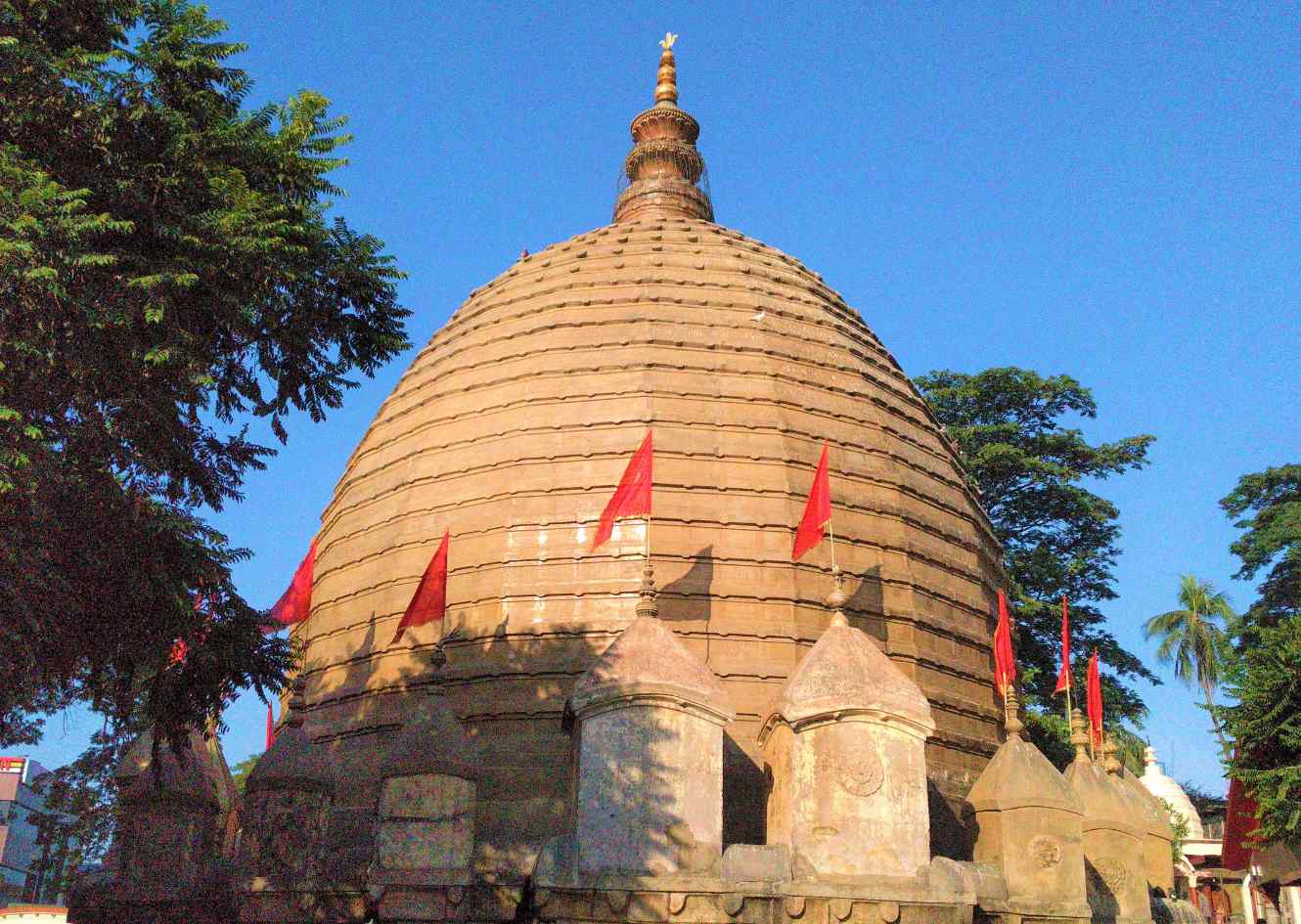Kamakhya, The Yoni Peeth And Its Miracles

Maa Kamakhya, a significant goddess in the Shaktism tradition, is a manifestation of Shakti, the divine feminine power in Hinduism. Also known as Kamakhshi or Kamakshi, she is revered as the Goddess of desire and is associated with the fertility of the Earth. Her primary place of worship is the Kamakhya Temple, one of the most prominent Shakti Peethas, located atop the Nilachal Hill in Guwahati, Assam, India.
The origins of Maa Kamakhya’s worship are steeped in ancient mythology and regional folklore. Legend says that when Sati, the first wife of Shiva, sacrificed herself at her father’s yagna (fire ceremony), a distraught Shiva carried her lifeless body through the universe. Lord Vishnu severed Sati’s body into 51 pieces using his Sudarshana Chakra to calm him down and restore the cosmic balance. Each piece fell onto the Earth, becoming a Shakti Peetha, a seat of divine feminine power. The place where Sati’s womb and vagina fell became known as the Kamakhya Peetha.
The Kamakhya Temple
The Kamakhya Temple, built in reverence to the Goddess, is an architectural marvel of medieval India, likely constructed in its current form in the 8th-9th century CE during the Pala dynasty. However, historical references suggest that the temple site is much older and dates back to the first millennium BCE, associated with the ancient Khasi sacrificial site.
Kamakhya Temple is also known as the Yoni Peeth. ‘Yoni’ symbolizes the feminine principle or the womb of the universe from which all forms emerge. This temple is where Sati’s womb and vagina fell during Shiva’s cosmic dance of destruction, symbolizing the divine feminine’s creative power.
The temple’s sanctum sanctorum (innermost shrine) does not contain a traditional idol or image of the Goddess. Instead, it houses a sculpted image of the Yoni — the female genitalia, representing the Goddess’s aspect of fertility and creative power. The Yoni is a natural cleft in a bedrock, partially filled with water from an underground perennial spring.
The temple is a significant pilgrimage destination for general Hindu and tantric worshippers. It is a particularly important site for devotees from the trans and queer communities in India due to the Goddess’s associations with the fluidity of gender and sex. This sacred Yoni is an important symbol in Tantric rituals, representing the union of Shakti with Shiva and the creation of the cosmos.
The temple rituals at Kamakhya are distinctive and involve offerings of flowers, fruits, and the sacrifice of goats in certain rites. The Deodhani dance, a snake dance performed while worshiping the Goddess Manasa, is another important ritual associated with the temple.
Tantra is a complex spiritual tradition that perceives the divine as a union of the feminine and masculine principles, Shakti and Shiva, respectively. The Kamakhya temple, dedicated to the Goddess Kamakhya, represents the feminine divine or Shakti and is revered as a potent source of this primordial feminine energy.
The temple has been a prominent center of Tantric practices, rituals, and learning. This temple’s Tantric practitioners (Sadhus and Sadhvis) follow the left-hand path (Vamachara), which embraces material reality as a path to spiritual transformation.
The Unique Miracles of the Kamakhya Temple
The unique aspects and miracles of the Kamakhya Temple attract millions of devotees and curious visitors worldwide. With its powerful spiritual energy, unique rituals, and mysterious phenomena, the temple remains one of the most fascinating and significant centers of Shakti worship.
There are several unique aspects related to the Kamakhya Temple.
The Bleeding Goddess: Perhaps the most famous miracle associated with the Kamakhya Temple is the annual menstruation of the Goddess. The Goddess Kamakhya is believed to go through her annual menstruation cycle for three days every year during the Ambubachi Mela. During this period, the temple is closed to worshippers. When it reopens, the devotees are given small pieces of red cloth that are said to be soaked with the Goddess’s menstrual fluid. It is considered highly auspicious and powerful. The miracle is that the underground spring in the main shrine flows with red water during these three days.
The Nine Enigmatic Shilas: Inside the temple’s sanctum sanctorum, there are no idols but ten rocks or ‘Shilas.’ One is always covered with a red cloth and is the main Kamakhya Devi. The other nine Shilas embody the nine forms of the Goddess – Durga, Jayadurga, Tripurasundari, Tara, Kali, Bhuvaneshwari, Chinnamasta, Bagalamukhi, and Matangi.
The Flight of the Pigeons: A curious phenomenon observed at the Kamakhya Temple is that no matter how crowded the place is, a flock of pigeons is always seen at the temple premises. It is believed that these are not ordinary birds but divine beings that reside in the temple. It would be considered a bad omen if they were to leave.
The Natural Spring: Another miracle of the Kamakhya Temple is the natural spring that flows in the sanctum. This spring keeps flowing, irrespective of the weather. The water from the spring is considered holy, used during the rituals, and distributed to the devotees.
Mysterious Sacrifices: Although animal sacrifices are not uncommon in certain Hindu temples, the sacrifices at Kamakhya have a mysterious element. It is said that if the Goddess wills an animal sacrifice, the animal voluntarily moves towards the sacrificial altar, showing no fear or resistance. If the Goddess does not will it, the animal will refuse to move, no matter how much force is applied.
Maa Kamakhya embodies the divine feminine’s powerful, creative, and nurturing aspects, connecting worshippers to primal energies and cyclical rhythms of the Earth. Through her, the Shaktism tradition of Hinduism communicates the sanctity of all creation and the cyclical nature of life, death, and rebirth. The reverence for Maa Kamakhya serves as a potent symbol of the divine feminine, her manifestations in the natural world, and her ability to transcend traditional binaries.
